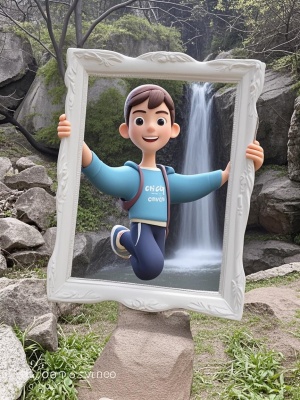Famous 3D Sculpture Artists: Masters of Dimension and Form
Introduction: The Evolution of 3D Sculpture Art
The world of 3D sculpture has undergone a remarkable transformation, blending traditional techniques with cutting-edge technology. Famous 3D sculpture artists have pushed boundaries, creating works that challenge perceptions of space, material, and artistic expression. From classical marble carvings to contemporary digital installations, these masters demonstrate how three-dimensional art continues to evolve.
In this exploration of famous 3D sculpture artists, we'll examine groundbreaking creators who have shaped the medium. Their innovative approaches offer inspiration for both traditional sculptors and digital artists working with modern tools like those featured in our AI Art Guide.
The Pioneers: Classical Masters of 3D Form
Michelangelo: The Renaissance Genius

No discussion of famous 3D sculpture artists would be complete without Michelangelo Buonarroti. His mastery of human anatomy and ability to "release" figures from stone revolutionized sculpture. Works like David and Pietà demonstrate unparalleled understanding of three-dimensional space and form.
Key innovations:
- Perfect proportion and anatomical accuracy
- Dynamic tension in static marble
- Emotional depth through physical form
Auguste Rodin: Breaking Conventional Boundaries
Rodin brought modern sensibilities to three-dimensional art with works like The Thinker and The Kiss. His expressive surfaces and fragmented forms anticipated abstract sculpture while maintaining figurative roots.
Modern Innovators: Redefining Sculptural Space
Henry Moore: Organic Abstraction
Moore's monumental bronze works transformed public spaces worldwide. His exploration of negative space and organic forms created a new language for 3D sculpture that influenced generations of artists.
Characteristics of Moore's style:
- Fluid, biomorphic shapes
- Strategic use of voids and openings
- Harmony with natural environments
Louise Bourgeois: Emotional Architecture
Bourgeois created psychologically charged sculptures that explored themes of memory, trauma, and domestic space. Her famous Maman spider sculptures demonstrate how 3D form can evoke powerful emotional responses.
Contemporary Visionaries: Digital and Mixed Media
Anish Kapoor: Playing with Perception
Kapoor's reflective surfaces and monumental works like Cloud Gate in Chicago challenge viewers' perceptions of space and dimension. His use of advanced materials shows how famous 3D sculpture artists continue to innovate.
Olafur Eliasson: Environmental Engagement
Eliasson blends sculpture with architecture and environmental science. His large-scale installations create immersive 3D experiences that often incorporate natural elements like light, water, and air temperature.
The Digital Frontier: 3D Sculpture in the Technological Age
Today's famous 3D sculpture artists increasingly work with digital tools, creating works that exist both physically and virtually. Artists like:
- Zaha Hadid (architectural sculptures)
- Nick Ervinck (3D printed organic forms)
- Rachel Whiteread (negative space casting)
These creators demonstrate how traditional sculptural concepts translate to digital mediums, much like the transformations possible through AI painting techniques.
Conclusion: The Enduring Power of Three Dimensions
From Michelangelo's chisel to modern 3D printers, famous 3D sculpture artists continue to expand our understanding of form and space. Their works remind us that sculpture remains one of the most physically engaging art forms, capable of transforming both public spaces and private perceptions.
For artists inspired by these masters, exploring contemporary galleries can provide valuable insights into how three-dimensional art continues to evolve in our digital age.
External resources for further study: